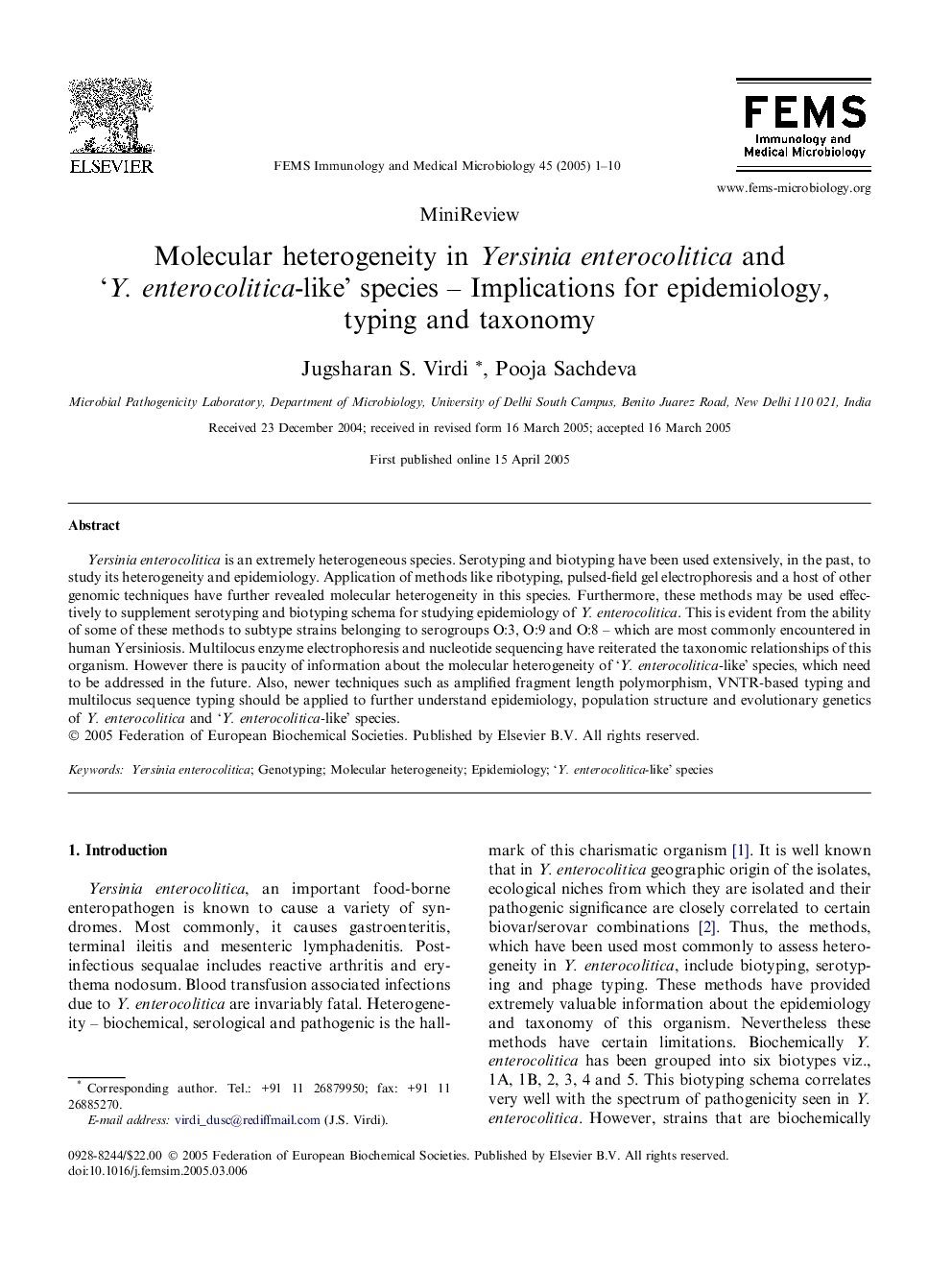| Article ID | Journal | Published Year | Pages | File Type |
|---|---|---|---|---|
| 9278013 | FEMS Immunology and Medical Microbiology | 2005 | 10 Pages |
Abstract
Yersinia enterocolitica is an extremely heterogeneous species. Serotyping and biotyping have been used extensively, in the past, to study its heterogeneity and epidemiology. Application of methods like ribotyping, pulsed-field gel electrophoresis and a host of other genomic techniques have further revealed molecular heterogeneity in this species. Furthermore, these methods may be used effectively to supplement serotyping and biotyping schema for studying epidemiology of Y. enterocolitica. This is evident from the ability of some of these methods to subtype strains belonging to serogroups O:3, O:9 and O:8 - which are most commonly encountered in human Yersiniosis. Multilocus enzyme electrophoresis and nucleotide sequencing have reiterated the taxonomic relationships of this organism. However there is paucity of information about the molecular heterogeneity of 'Y. enterocolitica-like' species, which need to be addressed in the future. Also, newer techniques such as amplified fragment length polymorphism, VNTR-based typing and multilocus sequence typing should be applied to further understand epidemiology, population structure and evolutionary genetics of Y. enterocolitica and 'Y. enterocolitica-like' species.
Related Topics
Life Sciences
Immunology and Microbiology
Immunology
Authors
Jugsharan S. Virdi, Pooja Sachdeva,
